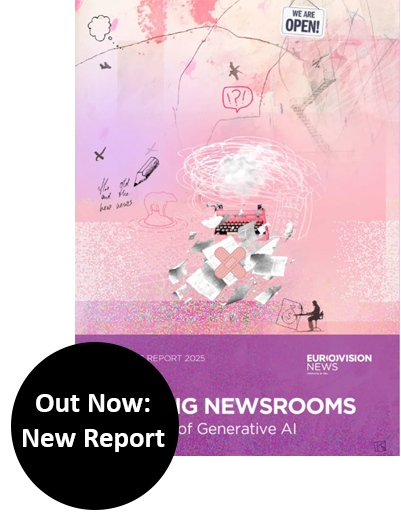Moaning can be a strategy, and the media has been using quite a bit of it in recent years. When the pandemic struck in the spring of 2020, it even felt like there was a competition for the bleakest headline. Who in the industry doesn’t remember Buzzfeed’s reporter Craig Silverman concluding that the coronavirus was a “media extinction event“. Last year though things went surprisingly quiet in the horror scenario department. And now the latest trend report by Oxford-based Reuters Institute is predicting something like a bull market for the industry: The subscription business is flourishing and even the digital advertising market, which had long been declared dead, has made a strong comeback. 59 percent of the surveyed 246 media executives from 52 countries reported rising revenues, and three out of four respondents expected an even better business in 2022. Hooray, we are playing again!
It should be noted that the annual survey is not representative. Mostly those respond who are already committed and possibly proud of their successes. Nevertheless, the situation is apparently better than the mood. Instead of a “media extinction event”, the pandemic has become a “media empowerment event.”
Fuelled by increased user interest and trust levels, editorial and management teams at many publishers have finally taken their fate into their own hands. They are developing new formats and workflows geared to user needs, fine-tuning subscription models, and even taking care of their customers. The crisis has accelerated innovation, dozens of media executives had already gone on record for the EBU News Report, published in late November 2021 (transparency note: I am lead author of the report).
This is about time. For decades, journalists have left the money-making part of the business to the publishers. These, in turn, had often just administrated advertisers and subscribers rather than selling advertising formats and journalism. But suddenly, advertising revenues dwindled, whereas on the content side, the quality supply multiplied. Journalism had become a consumer good, to be developed and sold accordingly. Only the producers had noticed it rather late. These days things are different. In many media outlets, teams of journalists, marketing, and tech have started to work together on products for different audiences. And what’s at least as important is that publishers look at how their neighbours are doing it, support each other, and – the master discipline – even develop solutions jointly. For 2022 and beyond, the smart ones are collaborating, cooperating and/or training together. This is happening on an international and national level. There are several examples:
► In the project “A European Perspective“, led by the European Broadcasting Union, public broadcasters share important content and make it accessible in different languages with the help of automated translation.
► In the Table Stakes Europe program, managed by the World Media Association Wan-Ifra, European publishers train their editorial teams in the “audiences first” principle and support each other; they recently started their third year (transparency note: I work as a coach in the program).
► In the award-winning Drive project, led by Deutsche Presse-Agentur, more than a dozen German regional publishers pool their user data and jointly analyse the findings.
And the number of international training programs, in which seasoned journalists and media managers look into each other’s decks and learn new skills, continues to grow. When it comes to innovation, scarce resources render it not only impossible but also stupid to be a lone warrior. This is especially true for public service media, where waste is hard to justify in front of the license fee or taxpayers.
Of course, there are also those who want to – and possibly can – go it alone. In the first week of January, The New York Times announced its acquisition of sports journalism platform The Athletic. It did so for $550 million, giving it access to subscribers across America and beyond. The industry has been debating ever since whether this is a new killer virus for local journalism or not all that bad, as Joshua Benton of Harvard’s Nieman Lab reflected.
And then there’s Axios, another U.S. digital journalism provider, which plans to redefine local journalism in a land of news deserts. It launched Axios Local and is expanding into audience-centric business journalism with Axios Pro. In addition, there are plenty of creators on both sides of the Atlantic who are making their debut as founders, either alone or in teams. Young journalists seem to have overcome their shyness when it comes to business models. Just a year ago, Project Oasis, a major study on media start-ups in the U.S. and Canada, analysed that many founders’ lack of business knowledge was the biggest hurdle to becoming successful media entrepreneurs.
So, are the many appeals to support journalism superfluous because the industry can manage without help? It’s not quite that simple. Pressure on press freedom is growing in many countries, and journalists are increasingly exposed to aggressive attacks. In addition, many customers could develop a kind of subscription fatigue and thus bring the positive development to a standstill. In the “Trends and Predictions” report of the Reuters Institute, significantly more respondents were convinced of their own company success than predicting a great future for journalism. This demonstrates a new sense of agency but also a certain humility. The diligent workers outnumber the visionaries. Most respondents said their focus this year would be making what they had already built better, more efficient and more user-friendly. Making growth sustainable, this should be a central goal – in 2022 and beyond.



